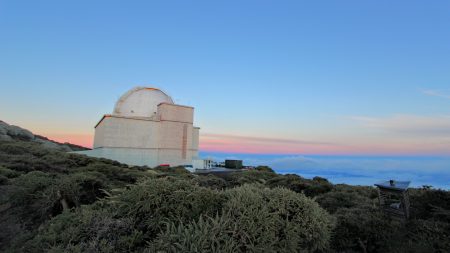2024: A Year of Scientific Breakthroughs
The year 2024 witnessed remarkable strides across various scientific disciplines, from mapping the intricacies of a fruit fly’s brain to observing the awakening of a distant black hole. These advancements not only deepened our understanding of the natural world but also opened up new avenues for future research and exploration.
One of the most significant achievements was the creation of the first complete map of a fruit fly’s brain, detailing all 139,255 nerve cells and their 54.5 million connections. This monumental effort represents the largest brain map ever constructed for any animal, despite the fruit fly’s brain being no larger than a poppy seed. This comprehensive map offers an unprecedented opportunity to unravel the complexities of information processing within the brain and potentially shed light on the workings of more complex nervous systems, including our own. Furthermore, the development of a prototype nuclear clock marked a significant advancement in timekeeping. While not yet fully operational, the prototype demonstrated the precise frequency of light needed to induce fluctuations in atomic nuclei’s energy levels. Nuclear clocks, once fully realized, hold the promise of unparalleled accuracy, enabling more precise measurements in fundamental physics research and potentially revolutionizing fields like navigation and communication.
Conservation efforts received a boost with the successful transformation of giant panda skin cells into stem cells. This breakthrough offers a powerful tool for protecting this endangered species. The ability to generate any type of cell from skin cells, including precursors to sperm and egg cells, opens up possibilities for assisted reproduction and genetic management, ultimately enhancing the panda’s chances of survival. In the realm of biological discovery, a type of marine algae surprised scientists by demonstrating nitrogen fixation capabilities, previously observed only in certain bacteria and archaea. This alga possesses an internal "factory" that converts nitrogen into ammonia, a biologically usable form. This finding suggests a fascinating evolutionary journey, likely involving a symbiotic relationship between the alga and another organism that eventually led to the integration of the nitrogen-fixing machinery. This discovery expands our understanding of nitrogen fixation in eukaryotes and highlights the intricate relationships that can arise in the biological world.
Particle physics also saw a major breakthrough with the confirmation of a rare form of particle decay. By smashing protons into a fixed target, physicists observed kaons decaying into an unusual combination of three other particles at an exceptionally low rate. This long-predicted decay provides a valuable test of the Standard Model of particle physics and opens up possibilities for uncovering new physics beyond our current understanding. In the botanical world, the Cyathea rojasiana tree fern revealed a unique adaptation for nutrient acquisition. This fern can transform its dead leaves into roots, allowing it to tap into nutrients stored in the soil. This remarkable strategy, never before observed in plants, illustrates the diverse and innovative ways organisms adapt to their environments. Understanding the mechanisms behind this process could potentially inspire new approaches to sustainable agriculture and resource management.
The vastness of space yielded another intriguing discovery with the observation of a "waking" supermassive black hole. Located in a relatively nearby galaxy, this black hole is gradually transitioning from a dim, quiet state to a bright, active one. This rare phenomenon provides astronomers with a real-time view of a supermassive black hole’s evolution and offers invaluable insights into the processes that govern the growth of these cosmic behemoths. Finally, the intersection of quantum physics and classical physics was explored through a novel measurement of Earth’s rotation rate using entangled quantum particles. The successful alignment of these measurements with Earth’s known rotation rate, despite the apparent incompatibility of quantum mechanics and gravity, is a significant step towards bridging the gap between these two fundamental theories.
These eight milestones represent just a glimpse of the remarkable scientific progress made in 2024. From the microscopic world of a fruit fly’s brain to the immense scale of a supermassive black hole, these discoveries expand our knowledge, challenge our assumptions, and inspire further exploration of the universe and the life it harbors. Each advance emphasizes the power of scientific inquiry to unveil the mysteries of our world and push the boundaries of human understanding. The breakthroughs of 2024 lay the foundation for continued progress in the years to come, promising even more exciting discoveries and advancements that will shape our understanding of the universe and our place within it. As we continue to explore the intricacies of the natural world, from the smallest particles to the largest cosmic structures, these scientific milestones serve as reminders of the boundless potential of human curiosity and ingenuity.















